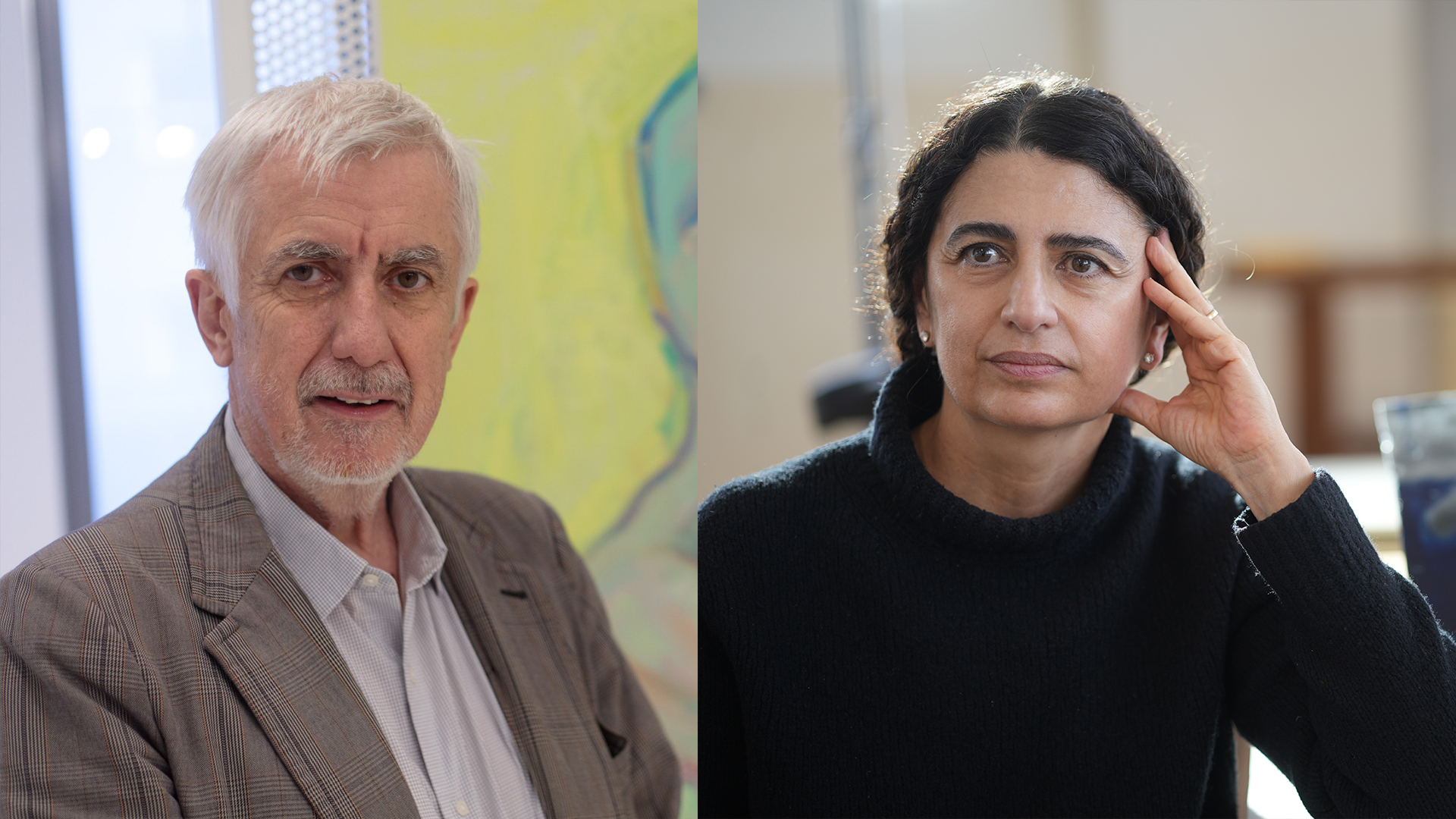
Peter Pakesch. Photo: Josepha Pakesch; Rachel Khedoori, 2024
In Conversation: Rachel Khedoori and Peter Pakesch
Join us for a walkthrough with artist Rachel Khedoori and Peter Pakesch, curator and chairman of the Maria Lassnig Foundation, on the occasion of Khedoori’s exhibition at Hauser & Wirth Zurich, Limmatstrasse. As the former director of Kunsthalle Basel, Peter Pakesch collaborated closely with Rachel Khedoori and presented her work in her first institutional solo exhibition in 2001. The walkthrough will take place in the exhibition, followed by a drinks reception.
This event is free, but reservations are recommended. Please register here.
The event will not be seated, but seating is available for those less able to stand. Please contact the gallery in advance if you have any special access needs.
About Peter Pakesch
Peter Pakesch, born 1955 in Graz, studied architecture at the TU Graz. He worked as an artist and curated his first exhibitions for the Forum Stadtpark and the Steirischer Herbst festival in Graz between 1976 and 1979. In 1980 he spent a period of study in New York, where he worked on various projects. From 1981 to 1993 he ran the Galerie Peter Pakesch in Vienna. In 1985 he founded the Grazer Kunstverein and organized several large exhibitions for the Steirischer Herbst. Between 1993 and 1995 he worked on projects for the National Gallery in Prague. From 1996 to 2003 he was director of the Kunsthalle Basel. Between 2003 and 2015 he was artistic director of the Universalmuseum Joanneum and founding director of Kunsthaus Graz. Since 2015 he has been chairman of the Maria Lassnig Foundation in Vienna.
About the exhibition
The artist Rachel Khedoori presents an installation of new work in the second-floor of our Limmatstrasse gallery. Over the course of a career spanning 30 years, Rachel Khedoori has worked in various mediums—film, sculpture and installation to reinterpret space and challenge perception through the discrete displacement of her mediums, materials and forms. For her new work in Zurich, Khedoori has applied a range of materials and techniques—cast aluminum, bronze, 3-D printing, resin, encaustic paint and paper—to produce an ensemble of sculptural works that oscillate between constructed and deconstructed states. The works on view form an interconnected vocabulary, consisting of various compositions of flat forms that evoke facades of buildings or camera shutters. Some are placed in front of glass panes and lit to produce shadows and reflections, referencing early magic lanterns. Models of rooms are stacked to become towers or collapsed structures or reduced to flattened planes on the floor. Tall rectangular sheets of resin coated paper with window cutouts recall hanging film strips as well as the facade of a building falling apart and flattened into a two-dimensional state. All of the works incorporate frames or windows that the viewer can look through. A large stack of resin-coated sheets of paper, punched through with holes of decreasing width, leans against a wall, evoking an early modern peep box. Resembling ruins, everything seems to be in the process of slow deterioration—of becoming new by breaking down.
